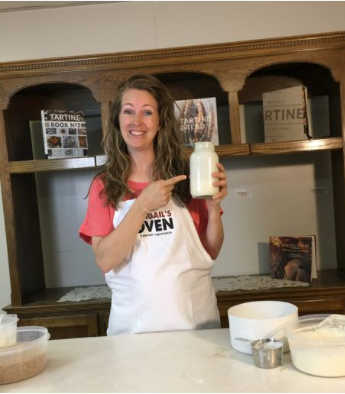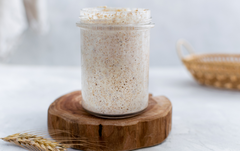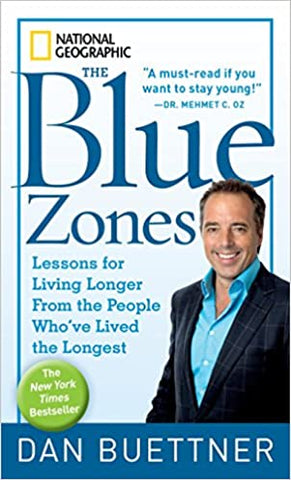
REAL™ yeast is the focus of Part I in this seven-part sourdough bread class from Abigail’s Oven taught by Martha Levie. As this series continues, you will learn step by step through the “Real 7™” method to make wholesome, nutritious bread at home.


1. Active Sourdough Starter is “Real Yeast”
The first thing we need is real yeast. This is number one for a very important reason—everything revolves around the yeast in a sourdough starter filled with beautiful bubbles.
You may have heard the terms natural leavening, wild yeast, and sourdough starter. They all mean the same thing. Natural leavening is flour and water mixed together and then fed every day for about two weeks until the mixture becomes a living mass of microorganisms that are feeding and growing.
Historians believe sourdough-leavened bread was first made in Egypt about five-thousand years ago. The story goes that Egyptians (who had learned to make beer by fermenting grain) had mixed up some pottage and left it outside accidentally, where it started to ferment in the hot sun. When they baked it, it raised and turned into a delicious, leavened loaf, unlike all the flatbreads they were used to eating. This sourdough start became the first leavening agent and Egyptians started making bread that way over and over again.
It took thousands more years and Louis Pasteur’s discovery of germs for people to start to understand what made this sourdough starter work.
Growing a “Real Yeast” Starter

Let me describe the process. A sourdough starter is made by combining flour and water, then feeding the mixture more flour and water every day until it starts to bubble and it doubles in size. You mix this starter with real water, real wheat flour, and real salt, and it will put real love into your bread.
The bacteria and yeast in the sourdough starter work in tandem to produce this magical sponge that we call natural love, or mother.
The sourdough start takes advantage of the natural yeast and natural bacteria that are in the air around us, on the grain, and on your hands. The flour and water in the sourdough start give them this great place to congregate. It’s like a little condo for wild yeast and bacteria to hang out in, multiply, and eat.
The yeast consumes the sugars in the flour and spits out carbon dioxide and ethanol, raising the start or dough through bubbles. Then the bacteria consume the starches and spit out lactic acid and acetic acid. These acids give the bread its “sour” flavor, or the tangy taste we know as sourdough.
But these acids also do more miraculous things. They begin to break down anything that might be an irritant in the wheat and process the gluten so that the bread is very easy to digest. This also makes sourdough bread low on the glycemic index, which means you will digest it slowly. Simple carbs, like sugars and white flour, cause your blood sugar to spike because they are digested so quickly. When you eat true sourdough bread, your body processes the carbs at a steady rate so that the sugars don’t come out all at once. For this reason, diabetics can typically eat sourdough without adverse effects.
We’ve found many people with gluten intolerance can eat our sourdough bread too. We’ve even had people that have celiac disease that have been able to eat a true sourdough bread because of the acids that the bacteria produce.
Improving Digestion Using “Real Yeast”
Sourdough bread also provides fiber and vital vitamins and the minerals, but in a much more digestible form. The acids in sourdough create a pre-digestion effect, which helps your body absorb other nutrients more easily. In fact, the acids in sourdough even promote better digestion for everything else that you’re eating.
Some say that if you eat a slice of sourdough bread with every meal, it will lower the glycemic index of everything you eat within four hours of eating that slice of bread. Those acids help your gut digest things super slowly, breaking everything down at a steady rate.
|
In 2010, by a book called The Blue Zones: Lessons for Living Longer From the People Who’ve Lived the Longest, in which he reported on his study of all the places in the world that had the highest longevity rate, the most happiness, and the best health. The only location in the USA was in Loma Linda, California. But he found an area in Greece where every place he went they had one miracle food that they ate that contributed to their long life. They ate bread made from a sourdough starter. |
SOUR ON BREAD Eat only sourdough or 100 percent whole wheat. Blue zones bread is unlike the bread most Americans buy. Most commercially available breads start with bleached white flour, which metabolizes quickly into sugar and spikes insulin levels. But bread from the blue zones is either whole grain or sourdough, each with its own healthful characteristics. In Ikaria and Sardinia, breads are made from a variety of whole grains such as wheat, rye, or barley, each of which offers a wide spectrum of nutrients, such as tryptophan, an amino acid, and the minerals selenium and magnesium. Whole grains also have higher levels of fiber than most commonly used wheat flours. Some traditional blue zones breads are made with naturally occurring bacteria called lactobacilli, which “digest” the starches and glutens while making the bread rise. The process also creates an acid—the “sour” in sourdough. The result is bread with less gluten even than breads labeled “gluten-free,” with a longer shelf life and a pleasantly sour taste that most people like. Traditional sourdough breads actually lower the glycemic load of meals, making your entire meal healthier, slower burning, easier on your pancreas, and more likely to make calories available as energy than stored as fat.—Food Guidelines – Blue Zones |
The benefits of eating sourdough may even compound the longer you do it. So you go 10 years eating a slice of sourdough bread with every meal, and you may be less likely to have heart disease or diabetes.
Making Bread a Miracle Food
Natural yeast does amazing things for you. And these wild yeast and bacteria, called lactobacilli (LAB), are only found in sourdough bread. I won’t call it a miracle food, I’ll just say it’s miraculous what happens when you eat it.
As people switched from sourdough starter to commercial baker’s yeast, they started making bread that does not have the irritants broken down and ready for digestion. Now people are having all sorts of issues when they eat grain. That’s the sad state of bread because we’ve moved away from this natural leavening.
When Louis Pasture discovered microbes, bakers realized that it was these bacteria that started the sourdough. They also discovered how to manipulate these microbes to make baker’s yeast.
Commercial baker’s yeast doesn’t have any actual bacteria in it. This yeast consumes starch very quickly and spits out carbon dioxide at a high rate. With baker’s yeast, bread will rise to double its size in 30 minutes. Sourdough takes about eight to twelve hours to double in size, so the baker’s yeast seems like an attractive alternative.
But the issue with baker’s yeast is there are no bacteria working in tandem with the yeast, breaking down anything irritable to your digestive tract. Baker’s yeast also gets down into your gut, reproduces and never dies, creating a really acidic environment. But wait, yeast dies at 140oF( 60oC), right? The problem is that when yeast is about to die, it has this mechanism built into it that shoots out spores that continue to live in the commercial bread. It is very difficult to get rid of this yeast. It can cause you to have sugar cravings and lead to eczema, candida and all sorts of problems.
I see these issues in the fact that people are getting sick from eating bread right now. A lot of that comes from the yeast. People claim all wheat is bad, but no one is really mentions that commercial yeast has a lot of issues.
Wild yeast, the real yeast that was used through the centuries is the first of our “Real 7.”
(Next Monday, look for the second in this series: REAL™ Wheat, which is part of Martha's presentation "The '7 REALs'™ of Sourdough Bread.)

Have a good day.


Martha is a busy mother of 10 children and with her husband Allen they run Abigail's Oven Bakery, producing thousands of loaves of #RealSourdoughBread each week.
As Chief Baker, she looks back to her own Grandmother's bread recipes and her daughter's entrepreneurial spirit as points in making their family business a success with bread now shipped nationwide and delivered weekly to more than 32 stores in Utah.
But selling good bread is not her only goal, she wants to help you learn to make REAL™ sourdough bread too!
Have a good day,


